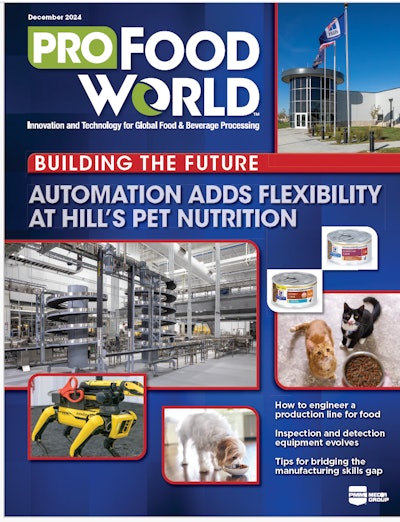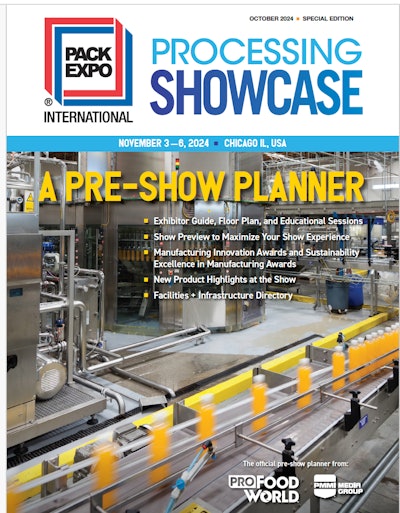It has been almost exactly 10 years since Wal-Mart Stores, Inc. rolled out its Sustainable Packaging Scorecard—a tool that not only sparked, but also drove the conversation around sustainability in the packaging community for the next several years. Since then, the scorecard as a standalone process disappeared, replaced by Walmart’s Sustainability Index.
On Oct. 25, 2016, Walmart unveiled a Sustainable Packaging Playbook for suppliers, which is says comprises best practices culled from its experience with the scorecard. Before the launch of the playbook at an event at Walmart’s Bentonville, AR, head office, Walmart Senior VP of Sustainability Laura Phillips sat down to talk with Packaging World about the evolution of these tools and how Walmart is using them to drive continuous improvement in its own and in major brand packaging.
Packaging World: Was the Sustainable Packaging Scorecard rolled into the Sustainability Index?
Laura Phillips: Yes, that’s exactly it. I remember working on the packaging scorecard many years ago. When we first started in product sustainability, one of the first things we started on was packaging, because packaging cuts through every category. It’s something we can all do. So we started with packaging and with the packaging scorecard. That was really the first sustainability measurement tool that we started using in our supply chain.
We then decided to partner with The Sustainability Consortium, and through that organization, we have developed a real life-cycle analysis across multiple product categories. So we have almost all of our categories covered now. In many of those categories, packaging is a critical component. Basically, the scorecard is now embedded into our sustainability index.
The Sustainability Index has what we call priority KPIs [Key Performance Indicators] that have been identified and vetted through all the teams that work at the consortium. Those KPIs are what we measure against each year, so we get great data now using the Sustainability Index on packaging and packaging materials.
For example, we ask our suppliers [brand owners] how much post-consumer recycled materials they are using. We are using that to report out on our packaging. It’s self-reported through our suppliers. That’s one of the area that’s common throughout many categories in our index.
Does this mean a supplier has to go into the index and report on everything from the sourcing of their raw ingredients to the end of their supply chain?
That’s it, yes. For every product category, there are 15 or so priority questions and KPIs that we are asking for. They are different by category, because the issues are different. So it could be about raw materials. It could be about how the product is made or produced or grown, if it’s in agriculture. It could be how it’s shipped and distributed, it could be how it’s packaged—it’s a complete life-cycle approach.
How do the best practices and insights gained from the scorecard translate to the new Sustainable Packaging Playbook and the Sustainability Index?
Yes, we put together this little playbook, and it’s pretty simple, it’s pretty basic. We tried to keep it focused. What we’ve learned is that you really have to take these complex issues and simplify them for people to make them actionable. And you really have to focus on the things that matter the most.
What we’ve done is we’ve used stories throughout, from our suppliers and our buyers, of where these changes have delivered a lot of impact, and we have put some of these best practices in the playbook. There are some examples of the Sustainability Index data in the playbook appendix that talk about some categories and where we’re seeing great progress on materials and such.
When Walmart was in the early stages of developing the index, I read that the goal was to end up with a score for each product that would be printed on-pack so that consumers could make decisions based on that score. Is this still the end goal?
Originally we thought we could boil it down to a simple score. What we found is that it’s just not that easy. We really haven’t been able to do that in a way that we feel comfortable would give customers the full context of a decision, down to one number. So we really haven’t pursued that number, if you will. What we are hearing from customers is that they want to know more about their product, where it came from, and how it was sourced. So we’re doing that.
The best way to communicate to customers is still on-pack. For example, we’re asking our suppliers to put recycling labels on-pack, because that’s the simplest way for customers—when they are at retail and they’re looking at the product, or they’re researching it online—to understand how to recycle the package after use. We are also continuing to work on new digital tools and other ways to give customers more information.
How is a product’s Sustainability Index score used by Walmart?
Basically, we use the index as a performance management tool with our suppliers. We rank our suppliers against each other, which drives a ton of competition. They know, for example that in one category they might be number one, and in another category, they might be number 10. They care a lot about that.
We use the information with our buyers. We give them really simple cheat sheets, if you will, on reading the information. We use a supplier matrix system to determine how we buy and from whom, as well as for performance management, for ongoing, continuous improvement with our suppliers.
In rooms like this, the buyers are sitting with the suppliers saying, “Okay, I see on packaging you rated really low. What are you doing about that?” That’s where we want the conversation to happen—between the buyer and the seller, around continuous improvement on the score.
In the playbook, one of the priorities you stress to suppliers is to support recycling. Can you talk about best practices in that area and your partnership with the Sustainable Packaging Coalition?
We think recycling is a critical part of the solution in terms of driving circularity for the future, and we play a critical role in that. We have all of our private-label brands working on adding the [SPC’s] How2Recycle label, and we are encouraging our national brand suppliers to consider using the label as well.
How was the playbook created?
We approach sustainability a little differently than other companies. We’ve put together these networks called Sustainable Value Networks across the company on issues around sustainability. We have a team in packaging—the Packaging SVN—and the team members are terrific. We have packaging experts in there, we have business folks in there, and they really work together well to develop a practical lens and solution. I love that the playbook is truly this team’s work. I think that’s the difference in how we approach sustainability, and I think that’s one of the reasons we’ve been so successful. It’s embedded in the business, it’s led by business people, and it’s supported by subject-matter experts.







.QDipPoDgvO.jpg?crop=focalpoint&fit=crop&fp-x=0.5&fp-y=0.5&h=167&w=250&auto=format%2Ccompress&q=70)














